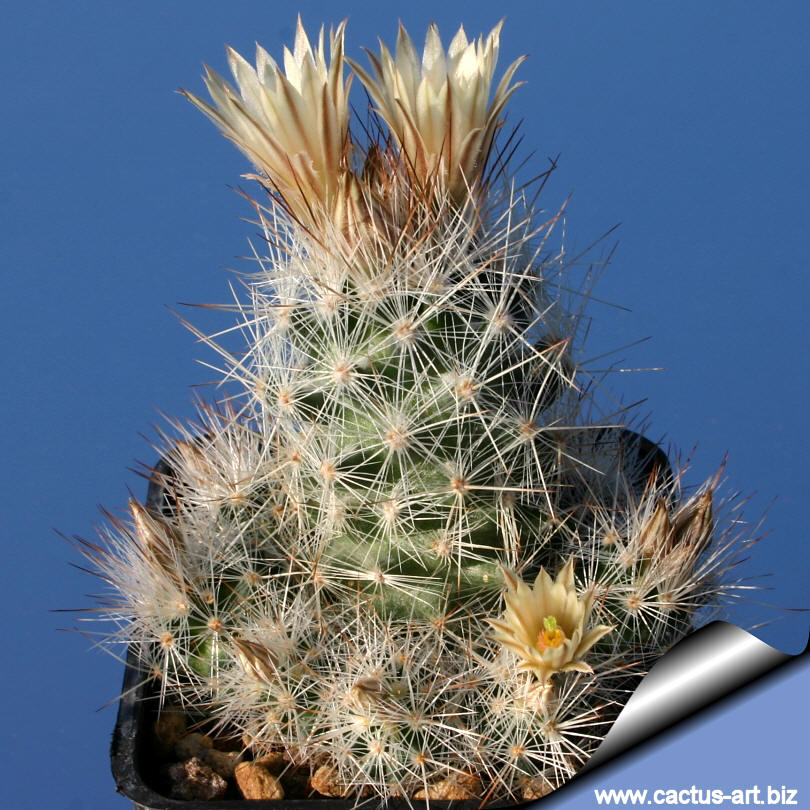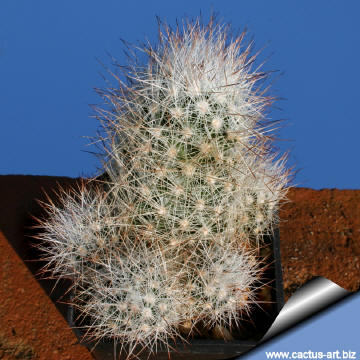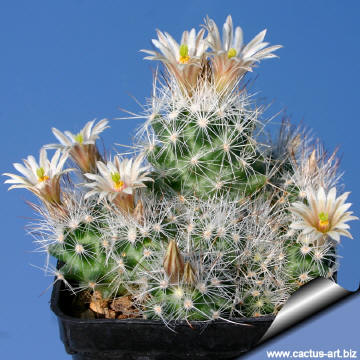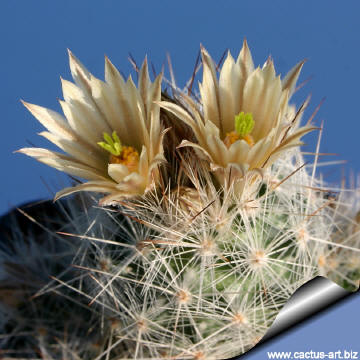Piccole piante interamente ricoperte da spine binche con punta scura. (età circa 5 anni)
Family: Cactaceae (Cactus Family) Scientific name: Escobaria lloydii Britton & Rose
The Cactaceae (1923), page 57 Escobaria lloydii N.L.Britton et J.N.Rose sp. nov. Collected by F. E. Lloyd in foothills of Sierra Zuluaga, Zacatecas, Mexico, March 29, 1908 (No. 5). Geographic Range: Mexico, South of Coahuila and North of Zacatecas (Type locality Sierra de la Zulaga). Habitat: Mattoral microfilo and rosetofilo, on stony soil, gravely bajadas, silty flats; at moderate elevations in Chihuahuan Desert Mountains. Conservation status: Listed in CITES appendix 2. Etymology: Named after Francis E. Lloyd (1868-1947), English-born cytologist, working in Canada and USA. Taxon synonyms: - Coryphantha lloydii (Britton & Rose) Fosberg
In Bull. S. Calif. Acad. Sci. 30: 58. (1931).
 Escobaria lloydii Las Palomas Escobaria lloydii Las Palomas
|
| Description: Small plants completely covered with spines, growing in clumps and and resembling a small species of Echinocereus.
Stem: Up to 7 cm tall, diameter 3,5 cm, branching from the base. Epidermis pale green.; old plants bearing naked corky tubercles.
Areoles: Roundish with white wool.
Radial spines: Approx 20 pure white, spreading, slender, up to 1 cm long.
Central spines: 4 to several, stout , 1,5 to 2,5 cm long white with brownish to blackish tip.
Flowers: 2.5 cm. Long, creamy-white or greenish eventually with a darker mid ribs on outside, filaments, style and stigma lobes greenish.
Fruit: Globular or ovoidal up to 12 mm long, red at maturity.
Seeds: Black, pitted, globose, 1 mm. in diameter. This species is near Escobaria tuberculosa, but it has much stouter central spines and greenish white, eciliate inner perianth-segments.
|
| Cultivation: Easy to cultivate in a very gritty substrate with much drainage. Water regularly in summer, but do not overwater (very rot prone), it prefer a completely dry place during winter. An unheated greenhouse would be perfect. It can survive low temperatures (approx -12 C). Full sun to light shade Propagation: Seeds (no dormancy requirement, they germinate best at 25°C in spring ) or usually by offsets (readily available), or occasionally grafted. |







